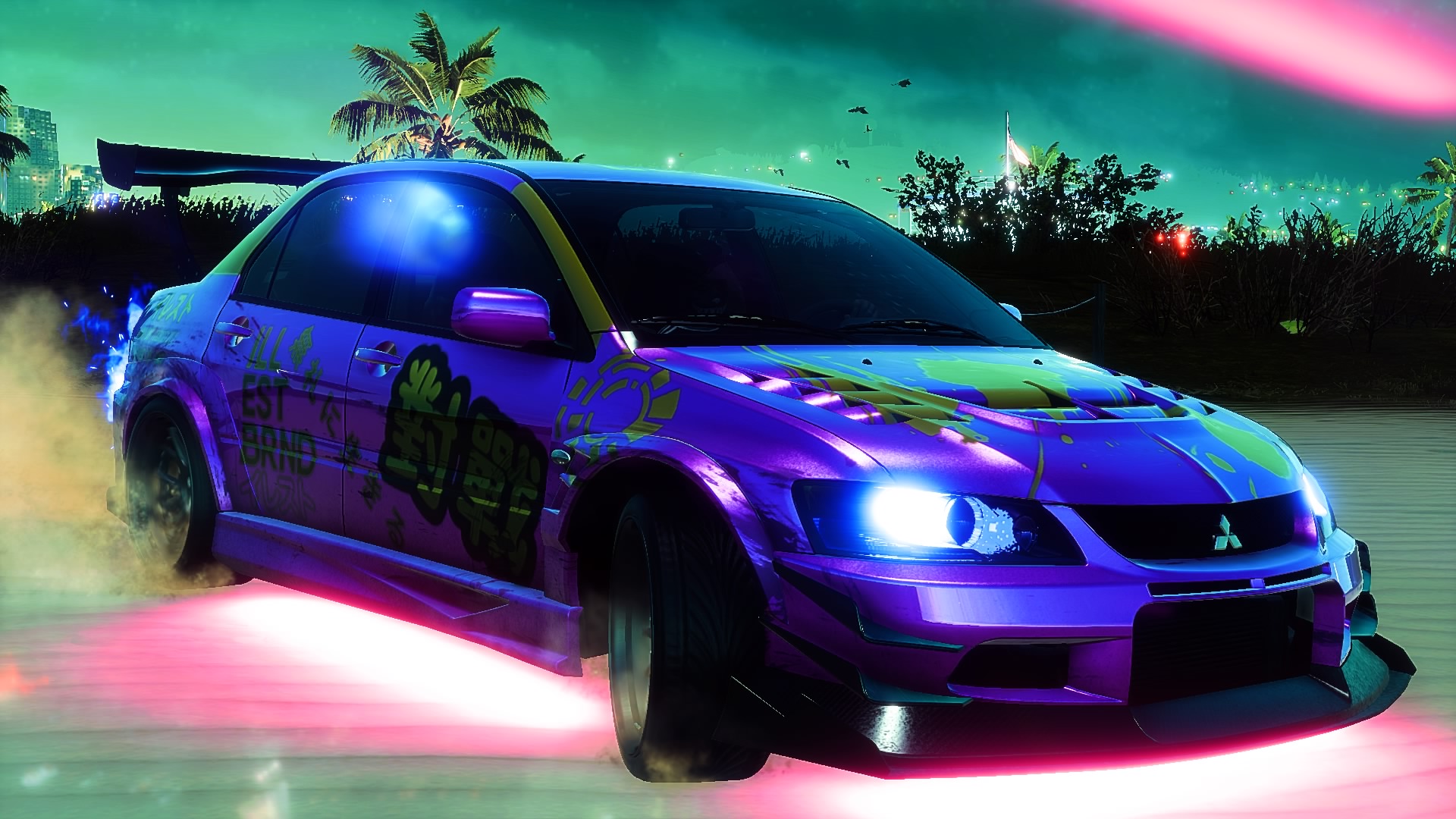
How Need for Speed let me embrace my queerness through its cars
The Need For Speed series offers a broad spectrum of racing games to whet the appetite of any gearhead. There’s the more racing simulator oriented Shift games, tuner culture-focused Underground titles, and the more story-driven (get it?) Payback. Unfortunately for fans like me, who want customisation over all else, Need For Speed hasn’t been kind to us in a long time.
Queerness and femininity are often considered incompatible with hard, masculine machines – there’s an outdated dualism that places men as civilised and Others as natural. This keeps us away from the world of cars, traditionally a very straight, masculine space. Fuck that. I’m queer and I love cars. I love the way they look, sound, and feel. There’s empowerment in controlling something as raw and unstable as an internal combustion engine, and women and queer people should be allowed to feel that power – even if it’s virtually.
As soon as I saw the reveal trailer for Need For Speed: Heat, I was hooked – the series was finally going back to its street racing, tuner culture roots. The trailer sets up a clear dynamic of cops versus racers, oppression versus freedom – “They destroy, so we design. They control, so we create.” A familiar sentiment for queer people who have been denied self-expression by bigots and bullies. But, there is more than just uncontrolled rebellion under the hood of the latest Need For Speed game. The electro-trap, the diverse characters shown, and the frankly gay colour scheme in the trailer all pointed to Heat being the most inclusive and customisable Need For Speed game yet.
In a series first, Heat features two queer characters, Roshni and Ana. In most of the series’ previous entries, you play as a dude, and there’s maybe a hetero romance subplot, so this diversion from heteronormativity is an important step. Forza 5 will include player pronoun options, and that’s great, but it’s not the same as a game featuring canonically queer characters. Outside of that and Heat, I couldn’t find any queer characters in any mainstream racing games – I did find Stick Shift, however. A game where you pleasure a gay car. Even in real-world F1, there is only one known gay driver in the sport’s history, Mike Beuttler. So, the inclusion of Ana and Roshni make me feel warm and valid because, as far as I can tell, they’re triple-A’s first queer racers.
Heat’s queer potential runs even deeper than that, though. Instead of being given some random dude-bro, or a faceless and silent driver, you get to pick from a range of different avatars. You can also customise their hair and what they wear. Dear reader, I picked the most Arab looking dude there and dressed him like a hype-beast twink – my racer persona was born.
Now, I really love arcade street racing games, especially the old Need For Speed ones where I could pour myself into the design of my car. Do I actually know anything about cars in real life? Do I even have a driver’s license? Those questions are homophobic, so I won’t be answering them. Customising a car in real life is ridiculously expensive. Customising a car in Heat, however, just takes a bit of time and love. What I found was that my car was becoming a subconscious extension of my queer self, even when I initially silenced that part of me.

I began the game with an old Mustang, because they’re one of my favourite cars. I painted it a rusted orange and put a sick grill and roof lights on it. It was all-American and masc as hell, completely unlike me. The world of cars is often quite a straight and masculine one – of over 900 drivers who have taken part in an F1 Grand Prix, only two were women. Films aren’t much better. The Fast and Furious franchise, while admittedly reducing the number of tracking shots of women’s butts, is very male dominated, and Megan Fox in Transformers stood out because “Oh my god that hot chick knows about cars and talks about them all sexy like.” My first car reflected this macho culture that’s pervaded mainstream media.
It hurt to realise that I had been so brainwashed by the notion that cars were for het boys that I’d made the straightest car I could imagine. I’d modeled it after the General Lee from the Dukes of Hazard, a film about manly country men saving their town. It wasn’t me. It represented what I thought I had to be to be a part of a culture I love.
Fortunately, as the game progresses, you unlock more decals, body parts, and accessories that you can use to personalise your car more than you can at the start. As I progressed through the game, explored the city, and won more races, I could expand on the original design of my cars. So, once I realised what I’d done, I decided to make sure my future cars were more my style.
My second car was an imported Mitsubishi Lancer Evolution X, and I painted it neon yellow and threw some pink diamonds and dollar signs on the back. I also added blue tinted windows and rims, and gave it a spoiler that looked like a pair of large fangs. This car was loud and had some bite to it, like me. My yellow Mitsubishi got adorned with the faces of some very colourful ladies, and I also made a deeply pink, slightly faster Mitsubishi Lancer Evolution IX – because I just really love Mitsubishis. Seriously, it’s so fun to say Mitsubishi. This one had yellow secondary colours and some anime decals so it mirrored my X, because I’m a triple Gemini – yes, we exist. No, we are not okay. The yellow splotches looked messy, like I’d sped off the line before the paint had time to dry. I’m impatient, and a messy driver in-game, and my IX showed that.

Unlike other racing games where you have to use different vehicles for different races, Heat allows you to tune cars for any type of race. This meant that my gay Mitsubishis could compete with big trucks in the mud and also slide round corners gracefully in drift challenges. I wasn’t limited to my rugged Mustang, I could use more delicate cars and not be penalised. Being able to exist outside of the status quo is a statement of queerness in and of itself, one that the game gladly allows for. What really cements Heat’s commitment to living outside the norm is the fact that you can upgrade your starter cars with whole new engines. These allow them to break free of their previous speed limitations and keep up with the game’s supercars. I didn’t have to leave my queer identity behind to compete at the highest levels of the game, it was welcome there, and it stood out proudly.
I put time, love, and most importantly, myself into those cars. That pair of imports represented me, both in solo and online play. Other players bought the Koenigsegg, the world’s fastest supercar, and still had to watch my queer behind as it beat them to the finish line in hot pink and neon yellow tuners. I didn’t have to conform to win. I could be my unapologetically queer self and still stand just as much of a chance as anyone. With Need For Speed: Heat I can create virtual mechanical perfection and pretend that the rumble of my controller is the roar of a V8.







